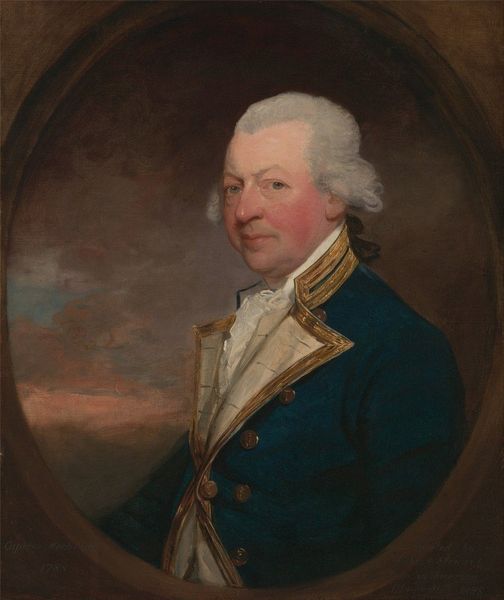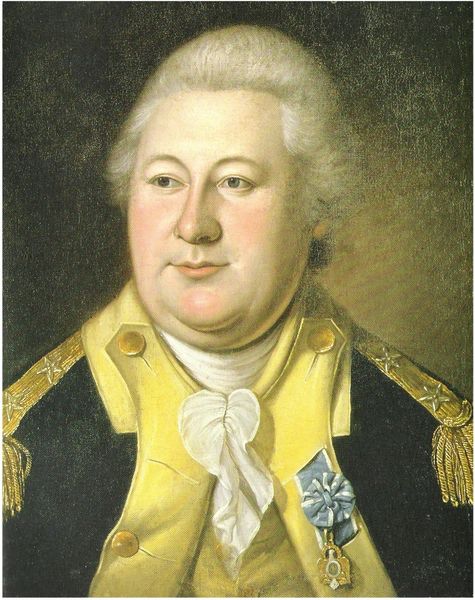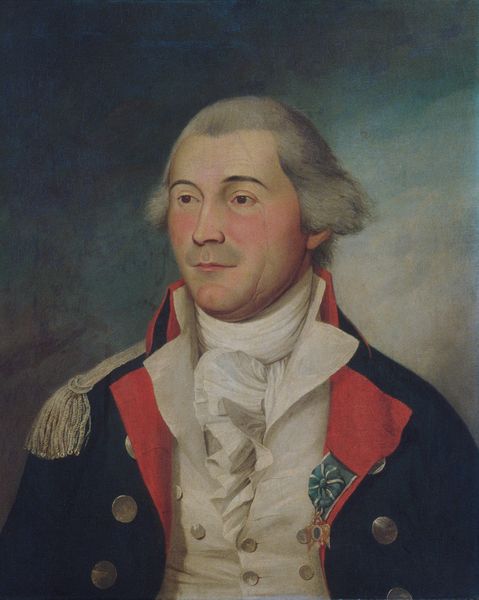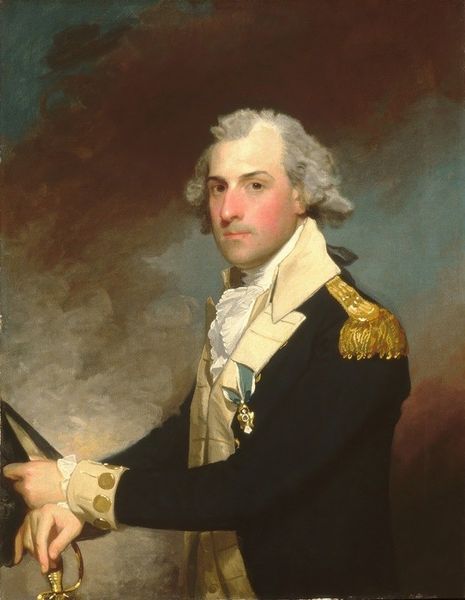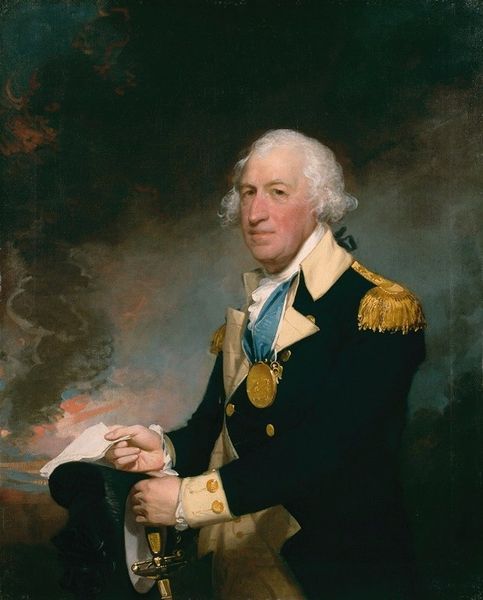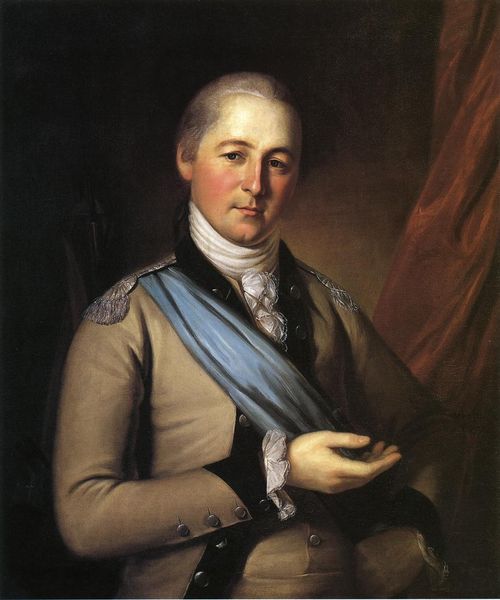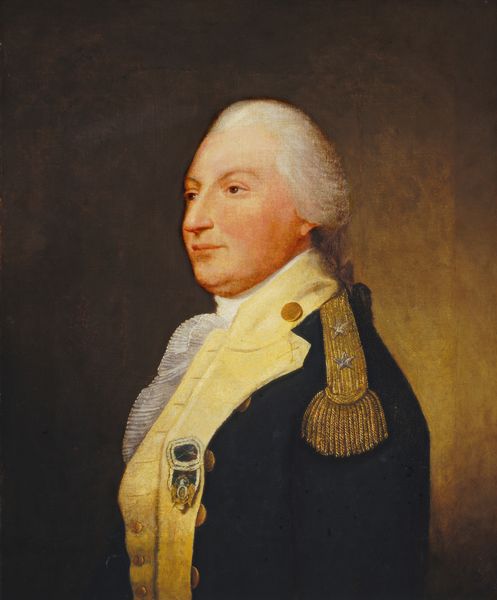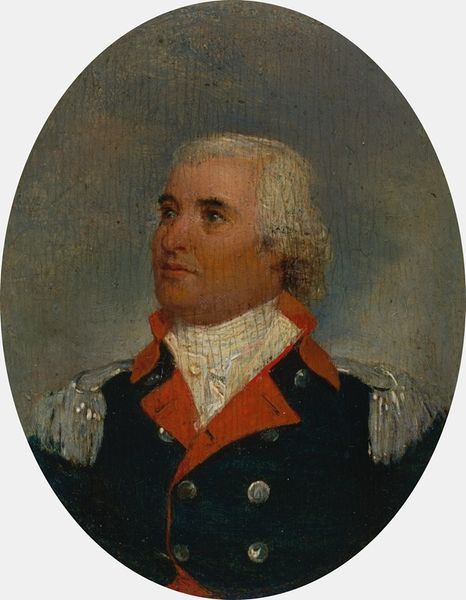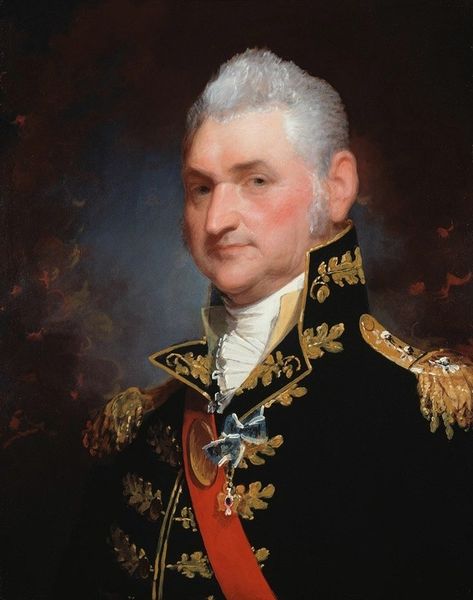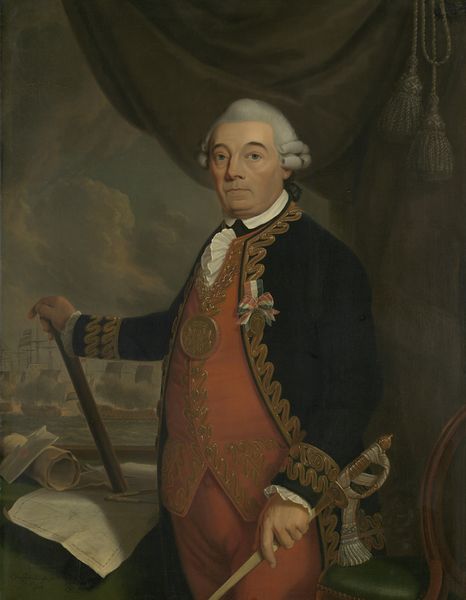
painting, oil-paint
#
portrait
#
painting
#
oil-paint
#
oil painting
#
history-painting
#
academic-art
Dimensions: 68.58 x 91.44 cm
Copyright: Public domain
Curator: What strikes me first about Rembrandt Peale's oil painting, "Portrait of Governor John Hoskins Stone of Maryland," is the somewhat stiff formality, wouldn't you agree? Editor: I see that rigidity, but I'm more captivated by the embedded power symbols: the baton, the books, the suggestion of landscape—all painting a picture of authority and knowledge. Curator: Exactly! And within the social context of Maryland in the early republic, Stone’s position as governor highlights complex dynamics of race, class, and political power at a formative moment. We have this wealthy white man standing for the values of governance, leadership and intellect... But how does this fit against the history of the systematic oppression and disenfranchisement experienced by people of color? Editor: Right, that is a stark juxtaposition! But observe the baton, for example: Its symbolic roots extend to ancient Roman power symbols adopted by European royalty, ultimately signaling a type of virtuous, earned authority in enlightenment thinking. Curator: While also visually suggesting that authority can be used as an instrument of control. Note, also, the subtle arrogance of his posture. This reinforces an old guard elite which has often leveraged those very enlightenment ideals to legitimize various forms of oppression, from slavery to coverture laws... Editor: An arrogance also hinted at, paradoxically, by his clothing... Notice that he wears his revolutionary militia gear but its ornamentation is a kind of elite branding that visually elevates him, literally and figuratively, above other figures. That costuming subtly reinforces an aspirational quality even amidst declarations of revolutionary leveling. Curator: And this interplay also speaks to gender norms. Those layers of lace and ornamentation might seem almost effete from a present day perspective. Yet these subtle touches helped to distinguish elite masculinity. In some respects they are saying to the contemporary world: it took education and status to maintain power, even on the edge of empire. Editor: I agree—these emblems of authority aren’t just surface details but rather condensed packets of cultural and psychological messaging which is always important when confronting these kinds of portraits. Curator: Ultimately, "Portrait of Governor John Hoskins Stone of Maryland" functions as both a symbol and a document to deconstruct and contemplate critically as we strive for a more fair society. Editor: Right, looking at portraits such as this we can more easily dissect inherited structures of symbolic power. They carry messages, intentional or not, and that should give us pause as we consume them.
Comments
No comments
Be the first to comment and join the conversation on the ultimate creative platform.
